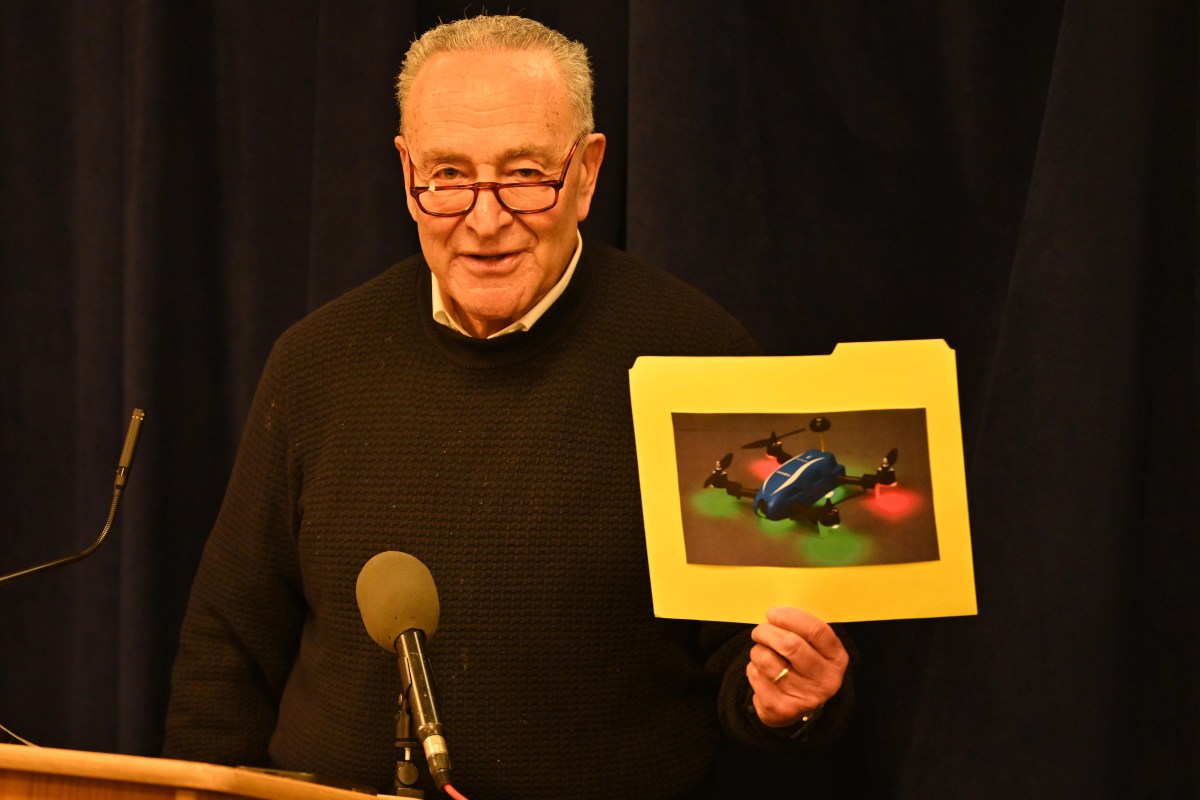New Station Listed In MTA Capital Plan
Rebuilding the Elmhurst Long Island Rail Road (LIRR) station is a goal included in the Metropolitan Transportation Authority’s (MTA) five-year capital plan announced last Tuesday, Sept. 23.
The proposed $32 billion slate of improvements to its transportation system included a $40 million plan to rebuild the Elmhurst stop in the vicinity of Broadway and Whitney Avenue, which closed in 1985 and was later dismantled.
In recent years, community activists and elected officials called on the MTA to rebuild the station to address transportation needs in the ever-growing Elmhurst area. Rep. Joe Crowley led LIRR officials on a tour of the area in March 2012, and officials later launched a community survey gauging public opinion about bringing back the stop.
Should funds be secured, the LIRR would construct two 12-car long platforms on either side of the station as well as platform railings and shelters, ticket vending machines, lighting and communication and security systems.
The preliminary plans also call for elevators from street to platform to ensure the station meets federal ADA (Americans with Disabilities Act) standards.
Local elected officials welcomed the proposed Elmhurst station, but cautioned the funding must still be secured in the years ahead to make it possible.
“Seeing the line item of $40 million for the LIRR Elmhurst stop in the MTA’s capital budget is a long time coming and much welcomed development,” said City Council Member Daniel Dromm in a statement to the Times Newsweekly last Friday, Sept. 26. “However, this capital budget should be seen as a wish list. These projects are not currently fully funded nor approved by the state. I will continue to advocate for this stop, which would cut down commutes and help Elmhurst residents get to where they need to go with greater speed. I hope the MTA will turn this wish from the community into a reality.”
Dromm further commented on Monday, Sept. 29, in a joint statement he released with Representatives Crowley and Grace Meng.
“We are thrilled to learn the MTA agrees that investing in this community is a win-win and that they have included critical funding to rebuild the station in their recently proposed capital budget,” the lawmakers stated. “For years, Elmhurst residents have called for greater transportation options and we are now one step closer to turning this idea into a reality. We will continue to work with MTA officials to ensure this project remains a top priority and look forward to the day when Elmhurst will be the next stop for millions of New Yorkers. More ‘station renewal’ coming
The MTA’s capital plan also includes proposed “station renewals” along three subway lines in Queens. During each station renewal project, the MTA fixes pressing infrastructure problems while improving each station’s overall appearance.
In 2016, according to the plan, the MTA will focus on renewing all stations on the N line north of Queensboro Plaza in Astoria: 39th Avenue, 36th Avenue, Broadway, 30th Avenue, Astoria Boulevard and Ditmars Boulevard.
The following year, eight stations on two lines are slated for renewals. They include the 82nd Street, 103rd Street, 111th Street and Mets-Willets Point stops on the 7 line in Elmhurst, Corona and Flushing; and the Cypress Hills, 75th Street-Elderts Lane, 85th Street-Forest Parkway and Woodhaven Boulevard stations on the J/Z line in Cypress Hills and Woodhaven.
The third round of Queens station renewal is planned for 2019, during which the MTA will spruce up the 52nd Street, Woodside-61st Street and 69th Street stations in Woodside.
Continuing with subway improvements, the MTA also aims to install Communications- Based Train Control (CBTC) along the E, F, M and R lines in Queens. The digital system allows not only the MTA to keep better track of its trains and potential problems, but also gives commuters the ability to find their trains through the Subway Time phone app and website.
The CBTC is already in place on the L line and the MTA is presently installing it on the 7 line.
Also on the list
Other proposed improvements in the capital plan include the following:
– The Ditmars Boulevard N train station and the Greenpoint Avenue G train stop will receive upgrades to make both locations ADA-complaint.
– The MTA plans to invest $250 million in developing new fare collection technology, including a “tap and go” system that will allow riders to pay their fare without having to use a MetroCard.
– A mobility needs study and corridor analysis of the Queens Boulevard Line-which carries the E, F, M and R trains through western Queens-will also be launched to identify congestion woes and provide potential solutions.
– Both the Hugh Carey (Brooklyn Battery) and Queens- Midtown tunnels, damaged during flooding caused by Hurricane Sandy in October 2012, will receive long-term improvements. At the Midtown Tunnel, the MTA plans to fix the tunnel control and monitoring systems, modernize the control room and install new wall tiles and lighting.
The entire capital plan, the MTA noted, is contingent upon securing proper funding from government sources. The agency reportedly identified ways to raise $16.9 billion in federal funding, public bonds and other sources, but acknowledged it must work with elected officials and other agencies to secure the remaining amount.
“The MTA Capital Program is our single most important effort to ensure we can keep the New York metropolitan region moving, so people can get where they need to go, businesses can thrive and the quality of life here can continue to improve,” said MTA Chairman and CEO Thomas F. Prendergast. “The MTA network is a $1 trillion asset, and it needs constant investment so it can serve everyone who relies on it now and can grow to serve more people in the future.”
Since 1982, it was noted, the MTA Capital Program brought more than $100 billion in improvements to its transportation system.
































